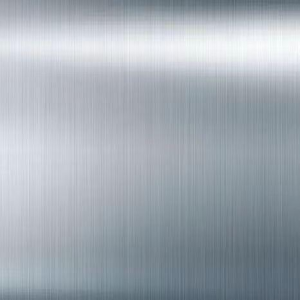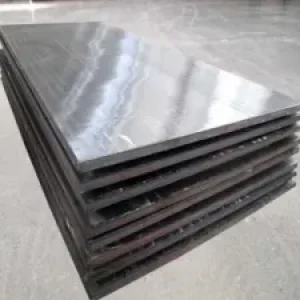Overview of Composite Panel Processing
Composite panel processing encompasses a series of manufacturing steps to create high-performance, layered materials combining different substrates for enhanced properties. These panels are widely used in construction, transportation, and industrial applications.
Processing parameters of Composite Panel
Material Selection: Choice of facing materials (such as aluminum, stainless steel, copper, or fiberglass) and core materials (e.g., polyethylene, honeycomb, or foam) based on the required properties (e.g., strength, weight, corrosion resistance, thermal conductivity).
Preparation: Surface cleaning and priming of the facing materials to ensure proper bonding. This may involve degreasing, abrasive blasting, or chemical treatments.
Adhesive Application: Selection and application of the appropriate adhesive or bonding agent, considering factors like curing time, temperature, and viscosity. The adhesive layer thickness is also controlled for consistent bond strength.
Lamination: The process of bonding the facing materials to the core material. This can be done through various methods, such as:
Continuous Lamination: Suitable for large-scale production, involves continuous feeding of materials through rollers and adhesive application.
Vacuum Bagging: Used for more intricate panels, where a vacuum is applied to remove air and ensure intimate contact between layers during curing.
Autoclave Processing: For high-performance composites, uses high pressure and temperature to ensure optimal bonding and material consolidation.
Pressing: Applying pressure during lamination to ensure good adhesion and eliminate any air pockets. Pressure levels and duration are critical to achieving uniform density and avoiding deformation.
Curing: Allowing the adhesive to set and reach its final properties. This can be done at room temperature or accelerated with heat, depending on the adhesive used.
Trimming and Cutting: After curing, panels are trimmed to their final dimensions using saws, routers, or CNC machines. Precision cutting is crucial for fitting and assembly.
Surface Finishing: Depending on the application, panels may undergo processes like polishing, painting, powder coating, or anodizing to enhance aesthetics or protect the surface.
Quality Control: Throughout the process, inspections are conducted to check for defects like bubbles, delamination, or inconsistencies in thickness. Non-destructive testing methods like ultrasonic inspection or X-ray imaging may be used.
Handling and Packaging: Careful handling is necessary to avoid damaging the panels during transportation. Panels are typically packaged to protect against scratches, moisture, and physical impact.
Composite plate processing
Raw material preparation: Select suitable substrate and cladding materials, such as stainless steel, aluminum, copper and other metal or non-metal materials, and ensure that their dimensions meet the requirements.
Surface treatment: Perform necessary surface treatment on the substrate and cladding materials, including cleaning, grinding, phosphating, etc., to improve the bonding strength.
Composite process:
Hot rolling composite: Two or more materials are tightly bonded by high temperature and high pressure. This method is suitable for the production of large-area plates.
Explosive welding: Use the energy generated by the explosion of explosives to quickly press different materials together, which is particularly suitable for the composite of dissimilar metals.
Cold rolling composite: The composite of materials is achieved through the rolling process at room temperature, and is often used to manufacture thin-gauge composite plates.
Finishing processing: Cut, straighten, trim and other operations are performed on the composite plate as needed to achieve the final size and shape requirements.
Quality inspection: Check the performance indicators of the composite plate such as dimensional accuracy, surface quality and bonding strength to ensure that the product meets the standards.
Company Profile
Metal Plates 4u is a trusted global metal material supplier & manufacturer with over 12-year-experience in providing super high-quality metal clad and relatives products.
The company has a professional technical department and Quality Supervision Department, a well-equipped laboratory, and equipped with advanced testing equipment and after-sales customer service center.
If you are looking for high-quality metal alloy clad and relative products, please feel free to contact us or click on the needed products to send an inquiry.
Payment Methods
L/C, T/T, Western Union, Paypal, Credit Card etc.
Shipment
It could be shipped by sea, by air, or by reveal ASAP as soon as repayment receipt.
5 FAQs for composite plate processing
What are the main types of composite plates?
There are mainly metal-metal composite panels (such as steel-aluminum composite panels), metal-non-metal composite panels (such as aluminum-plastic panels), etc. Each type has its specific application field.
How to choose the appropriate composite process?
When choosing a composite process, factors such as material type, thickness, production cost, and expected product performance need to be considered. For example, for the composite of dissimilar metals, explosive welding may be a better choice.
What are the advantages of composite panels?
Composite panels can combine the advantages of different materials, such as good corrosion resistance of one material and high strength of another material, while reducing costs.
What issues should be paid attention to during the processing of composite panels?
Attention should be paid to material matching, interface quality control, selection of processing parameters, and prevention of deformation during processing.
What are the application ranges of composite panels?
Composite panels are widely used in architectural decoration, transportation, chemical equipment, electronic products and other fields, because their unique performance combination can meet various special needs.


